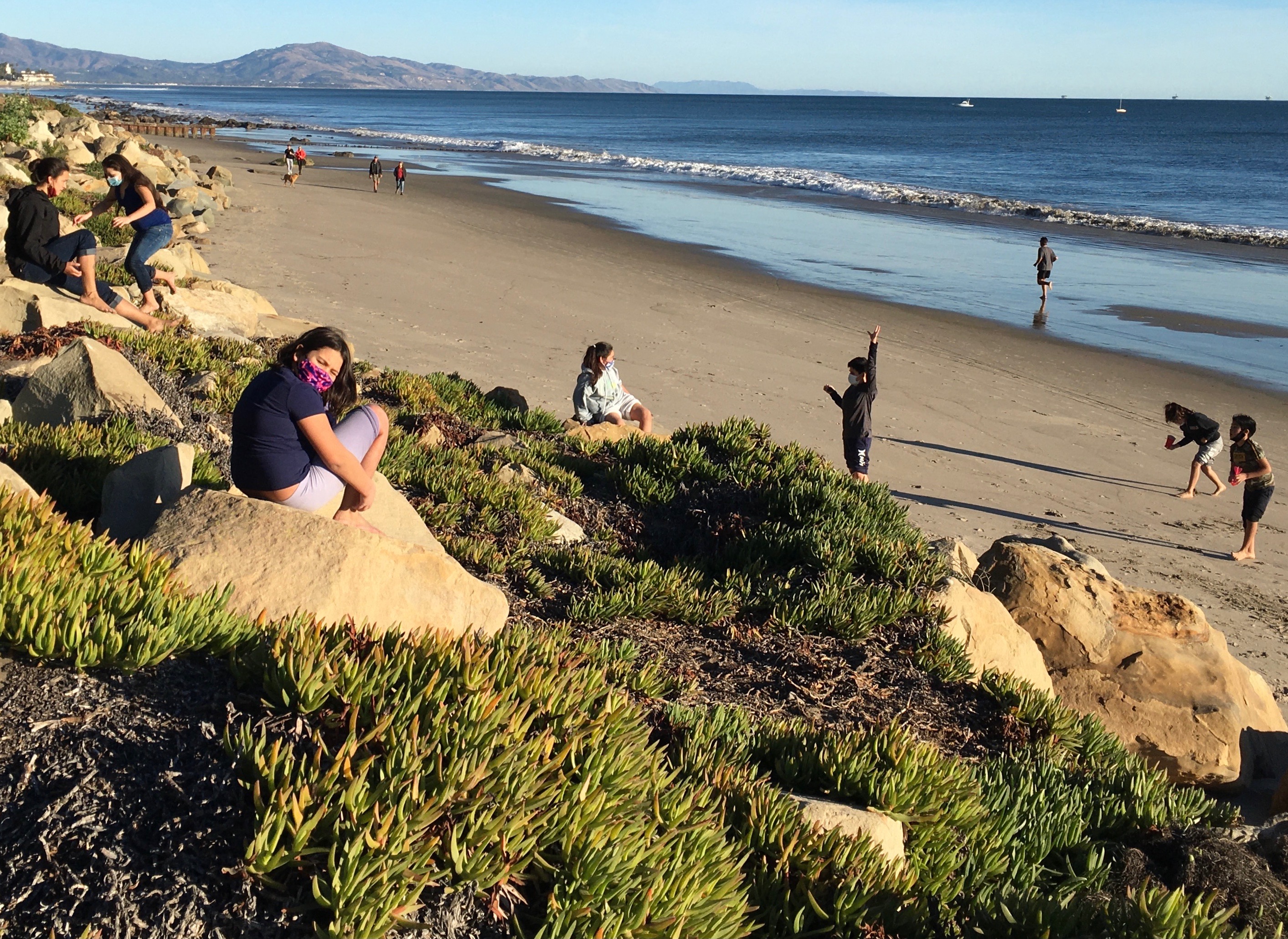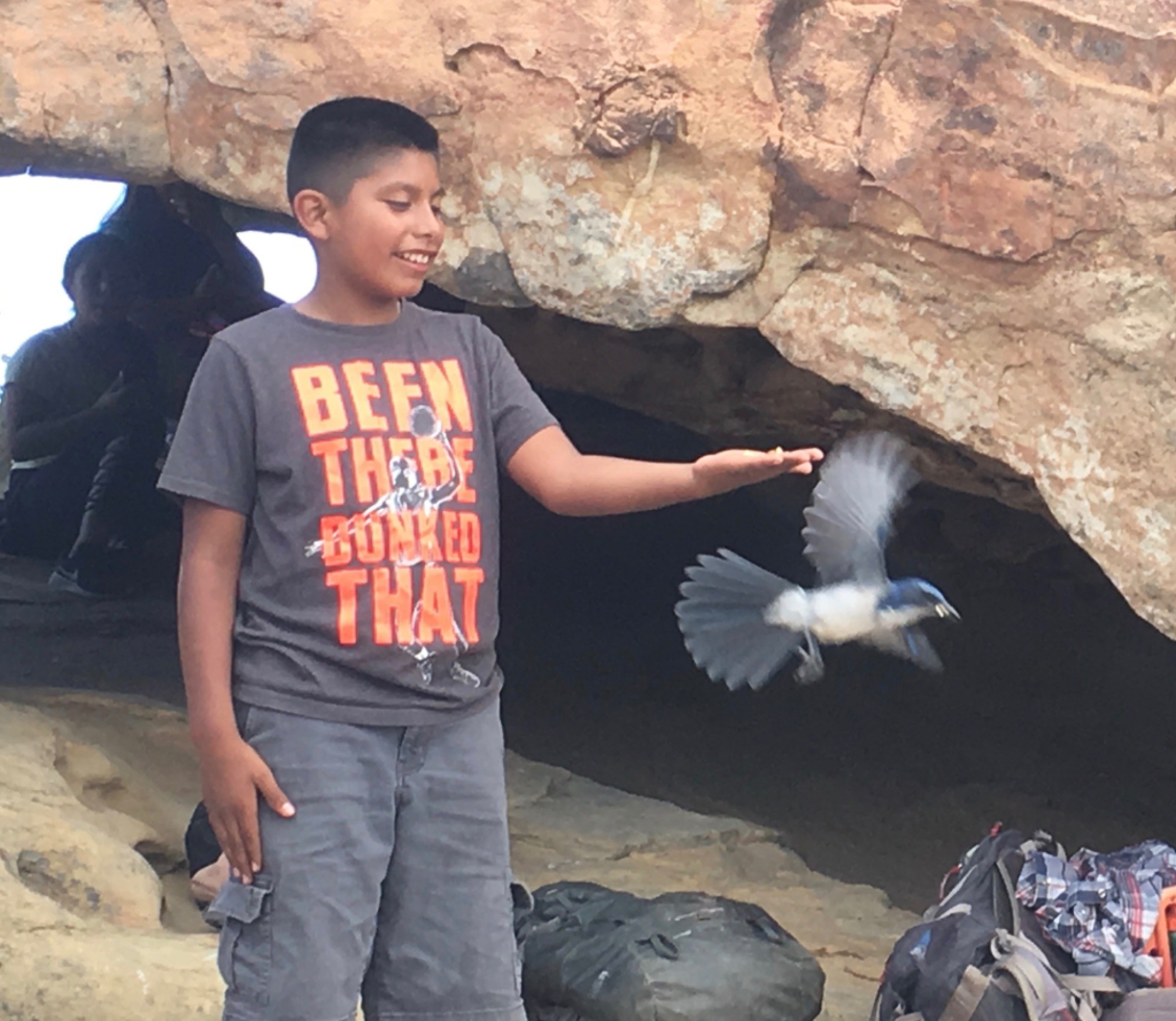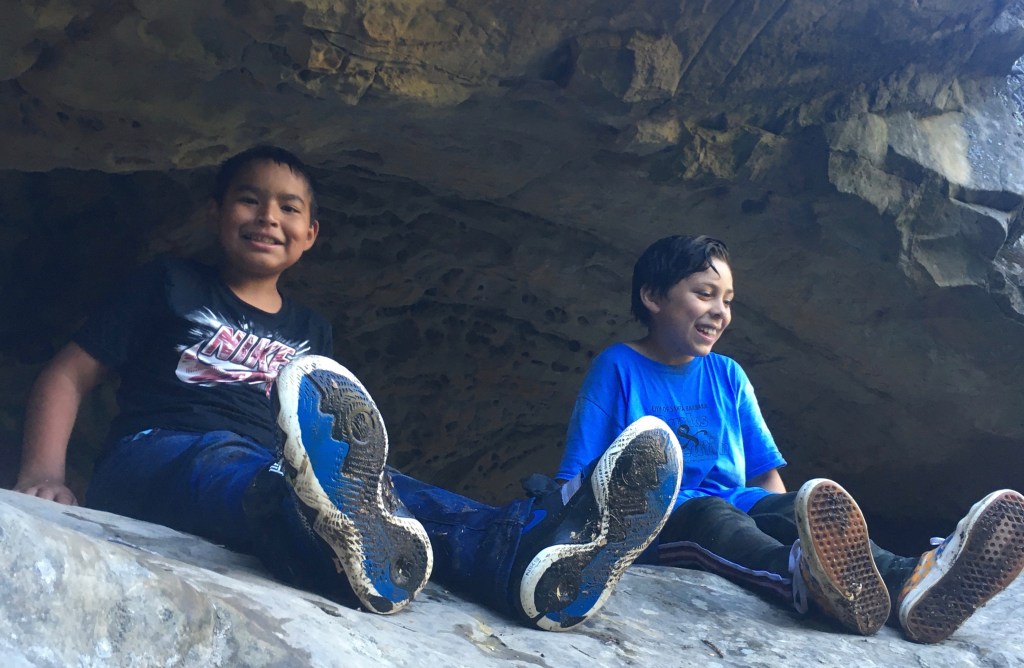Wilderness Youth Project Gets Kids out in Nature
Excursions Are More Valuable Than Ever, Especially for Low-Income Youth

Spending time in nature on a Wilderness Youth Project (WYP) program has been a much-needed bright spot for many Santa Barbara youth during the pandemic. WYP’s safe, outdoor environmental education programs are a welcome diversion for youth otherwise homebound with Zoom sessions. The programs are based on evidence that facilitated time in nature makes children smarter, healthier, and happier. Pre-pandemic, WYP served about 1,000 youth each year and with COVID, it operates at a somewhat reduced level.
The pandemic is WYP’s moment, according to WYP Development Director Michelle Howard, pointing to the increased screen time and decreased physical activity, which are resulting in learning loss and mental-health issues. Howard relates that people are seeing that nature connection is an essential part of human well-being. Especially for kids, Howard added, time outdoors can be one of the best ways to mitigate the challenges COVID poses. “Trauma and adverse childhood experiences exacerbated by the pandemic will have lasting effects, and children need positive mentorship and nature connection now more than ever,” Howard said.
Get the top stories in your inbox by signing up for our daily newsletter, Indy Today.
Executive Director Dan Fontaine shared that for some of these kids, this is the only time they are out of the house. The suffering brought on by COVID, Fontaine related, has been a low level of melancholy, and WYP programs, by getting kids outside, provide a life-affirming, joyful experience — a reminder of what life used to be like pre-pandemic.
Wilderness Youth Project’s Bridge to Nature programs are offered free of charge to youth of various ages. Pre-COVID, the main component served 4th grade students at nine elementary schools, all of which had more than 50 percent of the students on free and reduced-price meal plans (a low-income indicator). Youth would board buses once per month for a three-and-a-half-hour outing in nature.
When the pandemic hit, like most everything else, the program went virtual, and then after some creative planning, in the fall, the in-person outings resumed — this time based at low-income housing sites and community centers and open to all elementary grade levels. Instead of boarding vans, groups safely walk to outdoor locations close by. In this winter term, 132 youth are being served once per week. Youth participate for at least 10 weeks, some for as long as 30 weeks.
Last summer, the program received a $100,000 outright grant from Paul and Jane Orfalea’s Audacious Foundation and another $50,000 challenge grant that was met. “This pandemic is taking a heavy toll on children,” Paul Orfalea shared. “Spending all day inside is not a healthy or happy childhood. Kids need to be outside — exercising and playing actively.” Orfalea chose WYP “because they’re the pros when it comes to nature-based learning.”
S.B. County Public Health’s Dr. Tony Rogers, who serves on the WYP board, is concerned about the lasting health impacts of prolonged inactivity brought on by the pandemic and sees WYP programs as the best means for playing safely and smartly outdoors. These programs, according to Rogers, make kids not only happy but smarter and healthier too. Rogers has played a key role in adapting WYP programs to COVID, ensuring proper protocols are in place to safeguard youth and staff.
Pre-COVID, WYP took youth to local creeks, beaches, mountain trails, and open spaces. The inability to safely use the vans means the diversity of destinations is gone, but Executive Director Fontaine noted there is a silver lining to this, with kids gaining an in-depth knowledge of one place, seeing changes through the seasons, and developing a deeper connection to the place.
The curriculum is focused on child-centered exploration, awareness, and the building of naturalist skills. A four-to-one youth-to-counselor ratio ensures significant mentoring opportunities. Youth learn hazards of nature and how to stay safe. They learn how to track animals, identify plants and trees through field marks, and understand their edible/medicinal values. Emphasis is placed on the discovery process through observation and questions by staff, most of whom are naturalists.
Other components of the Bridge to Nature program are offered at Storyteller Children’s Center, which serves homeless preschoolers, and at PAL (Police Activities League), which serves at-risk teens.
The Storyteller program went virtual in March and then resumed in the fall, walking to nearby sites. The program at PAL also went virtual in March and then resumed in the fall as part of a new collaborative program with the Santa Barbara Bicycle Coalition. The bikes enable youth to reach further destinations than walking. In some cases, kids are actually learning to bike, and having fun along the way. WYP hopes to expand this collaborative program beyond the two sites where it currently operates.
In addition to these free programs, Wilderness Youth Project has another whole sphere of programs — after school, summer camps, and preschool —that are fee-based. These programs don’t serve a totally separate demographic, however, as most of the youth in these programs receive some amount of scholarship.
When COVID hit in March, the after-school programs, which serve K-12 and preschool programs, went virtual, then resumed in-person in the fall. Pre-COVID and now, parents/guardians provide transportation to and from meeting spots such as Tuckers Grove or the Rose Garden. Pre-COVID, the after-school program used vans to whisk kids off deeper in nature, but now they stay put, delving deeper into the one place. This current winter term, WYP is serving nearly 400 kids across all programs, down only slightly from last winter.
WYP adapted its summer camp to COVID last year, serving 236 kids, about a third fewer than normal, with more than half receiving a scholarship.
According to Fontaine, the pandemic has reinforced the importance of serving low-income youth, who have been disproportionately impacted by the pandemic, a fact seen in the county’s COVID statistics and firsthand by staff in the rate of absences from programs due to an ill family member.
WYP relies on grants and donations for about two-thirds of its income. It has major plans to expand both its Bridge to Nature Programs and its fee-based programs as there is significant unmet demand for both. WYP operates with 19 full-time and 38 part-time staff and lots of volunteers. It is seeking to expand both its staff and volunteer ranks.
For more info on the Wilderness Youth Project, click here. For info on volunteering, click here.
Every day, the staff of the Santa Barbara Independent works hard to sort out truth from rumor and keep you informed of what’s happening across the entire Santa Barbara community. Now there’s a way to directly enable these efforts. Support the Independent by making a direct contribution or with a subscription to Indy+.





